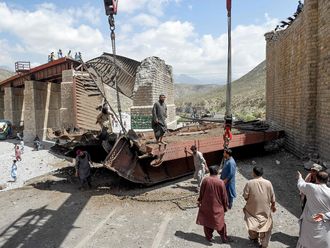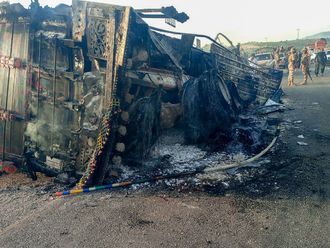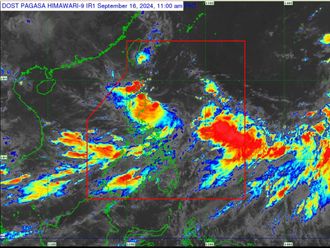
Dubai: A landfall, in simple terms, is the process of a storm moving over the land after its intensification in the ocean, its heat source.
Therefore, a cyclone is said to make landfall when the centre or the eye of the storm moves across the coast. In short, landfall is the intersection of the surface centre of a tropical cyclone with a coastline.
Tropical cyclones are usually formed in warmer seas. The strongest winds of the cyclone are not at the centre, but at the immediate surroundings of the eye of the storm — usually stronger on one side of the centre.
Also read
Therefore, very high wind speed can be experienced over the land area when the cyclone is near the land, even when it is yet to make landfall. It can be vice versa too, where the cyclone can make landfall but leave the strongest wind over the ocean.
The landfall usually brings with it high-speed winds, severe storm surge and torrential downpour, all of which can have a severe impact on the region. The storm usually weakens rapidly after landfall as the ocean heat and moisture that fuels the storm are no longer available.
A cyclone can start losing its energy and speed after hitting the land as they get energy from the warm ocean water. However, that doesn’t happen so quickly.
Often, the cyclone can move over to land, its wind field tends to increase. Thus, it can affect a larger area than what scientists may have forecast.
A larger wind field along the coast results in storms and rising ocean waves.
Process begins
Last evening, the landfall process commenced over the coastal districts of Saurashtra and Kutch in India and it will continue until midnight, says India’s Met department.
As Biparjoy made landfall on Thursday evening vast swathes of western India and neighbouring southern Pakistan braced for flash floods, heavy rain and high winds.
Rain pelted the shores and skies darkened along the Arabian Sea, while dust storms hampered evacuation and rescue work on land. Authorities expect conditions to worsen for two or three days as Biparjoy was expected to reach wind speeds gusting up to 140kmph (86mph) before slowing down in India’s Gujarat province.
In India’s Kutch district, near Jakhau port where the cyclone made landfall, authorities were expecting significant inundations of the area. In Pakistan, Keti Bandar in the country’s flood-ravaged southern Sindh province, also lies in Biparjoy’s path.
The bazaars and beaches in Mandvi, India, usually a bustling coastal town known for its wooden boat-makers, were deserted Thursday under government shutdown orders. Heavy winds and rains uprooted some trees in the area. Local media reported that a pregnant woman was brought from Shiyalbet island to shore and admitted to a hospital.
Amid dust storms and rain, displaced families were visibly shocked at relief camps in southern Pakistan. One of the evacuees, 82-year-old Bachai Bibi from Badin district in Sindh province, said “I don’t know what will happen to my home.”
Mohammad Ashraf, 35, said local officials helped him, his wife and three children escape from the Pakistani village of Sheikh in the storm zone.












